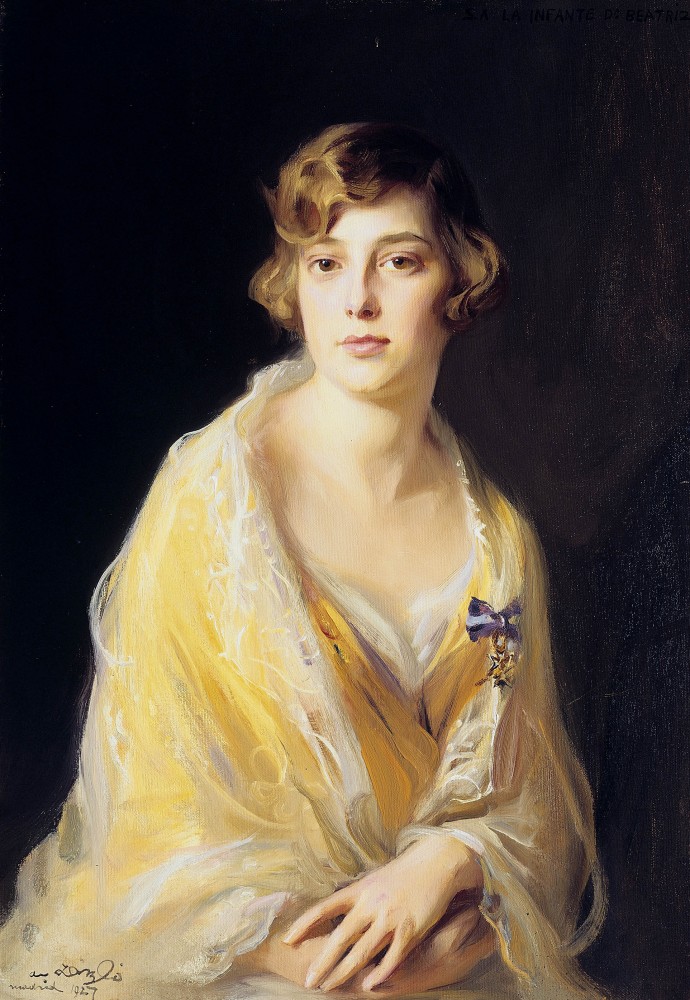El 15 de abril de 1969, la reina Victoria Eugenia de España murió en Lausana (Suiza) a la edad de ochenta y un años. La reina fue enterrada el 18 de abril de 1969 en la iglesia del Sacré-Cœur de Lausana. Dieciséis años después, Su Majestad fue enterrada de nuevo en El Escorial (España) el 25 de abril de 1985.
 |
| Reina Victoria Eugenia de España |
La futura reina de España nació el 24 de octubre de 1887 en el castillo de Balmoral, en Escocia. La princesa era hija del príncipe Enrique de Battenberg (1858-1896) y de la princesa Beatriz del Reino Unido (1857-1944), que se habían casado en 1885. La nueva Battenberg recibió el nombre de su abuela, la reina Victoria del Reino Unido, y de su madrina, la emperatriz Eugenia de Francia.
La princesa Victoria Eugenia de Battenberg se casó con el rey Alfonso XIII de España el 31 de mayo de 1906 en San Jerónimo el Real de Madrid. Las celebraciones se vieron empañadas por un intento fallido de asesinato contra la pareja. A la boda de Victoria Eugenia asistieron su madre Beatriz, sus hermanos Alejandro y Luis y sus primos, el príncipe y la princesa de Gales (los futuros reyes Jorge V y María).
.jpg) |
| Intento de asesinato del rey Alfonso XIII y la reina Victoria Eugenia el día de su boda |
En el transcurso de su matrimonio, el rey Alfonso y la reina Victoria Eugenia tuvieron siete hijos en rápida sucesión. El primero en llegar fue el heredero, el infante Alfonso, príncipe de Asturias, el 10 de mayo de 1907. El príncipe de Asturias renunció a sus derechos dinásticos en 1933 al contraer matrimonio en primera persona con Edelmira Sampedro-Ocejo y Robato, condesa de Covadonga (1906-1994). La unión de la pareja terminó en divorcio en 1937. Ese mismo año, Alfonso se casó con Marta Esther Rocafort-Altuzarra (1913-1993), se separaron a los pocos meses y se divorciaron en 1938. El príncipe de Asturias falleció a los treinta y un años el 6 de septiembre de 1938. Al igual que su hermano menor, Gonzalo, el príncipe había heredado la hemofilia, el trágico legado de la reina Victoria, a través de su madre, la reina Victoria Eugenia.
 |
| Infante Alfonso, Príncipe de Asturias |
 |
| Infante Jaime of Spain |
Then came Infanta Beatriz on 22 June 1909. Beatriz wed Alessandro Torlonia, 5th Prince of Civitella-Cesi in 1935. Beatriz passed away on 22 November 2002 at the age of ninety-three. Princess Sibilla of Luxembourg (b.1968; née Weiller), wife of Prince Guillaume of Luxembourg and sister-in-law of Grand Duke Henri, is a granddaughter of the infanta.
 |
| Infanta Beatriz of Spain |
A stillborn son followed Infanta Beatriz, Infante Fernando, who was born and died on 21 May 1910.
On 12 December 1911, Infanta Maria Cristina joined the family. In 1940, the infanta married Enrico Eugenio Marone-Cinzano, 1st Count Marone. Maria Cristina died at the age of eighty-five on 23 December 1996.
 |
| Infanta Maria Cristina of Spain |
Infante Juan was born on 20 June 1913: he was given the title Count of Barcelona and married Princess Maria de las Mercedes of the Two Sicilies in 1935. The Count and Countess of Barcelona became the parents of King Juan Carlos I of Spain and his two sisters, Infantas Pilar and Margarita. The Count of Barcelona died on 1 April 1993, aged seventy-nine.
 |
| Infante Juan of Spain |
Lastly came Infante Gonzalo, who arrived on 24 October 1914 and died aged nineteen on 13 August 1934. Gonzalo had inherited haemophilia through his mother; this affliction led to his early death after he was involved in an automobile accident.
 |
| Infante Gonzalo of Spain |
With her family, Victoria Eugenia departed Spain on 14 April 1931 when elections in the country brought the Republicans to power. Queen Victoria Eugenia of Spain became a widow on 28 February 1941, when King Alfonso XIII died at Rome following the fallout of a heart attack suffered earlier in the month. The couple had lived separate lives for sometime.





No comments:
Post a Comment